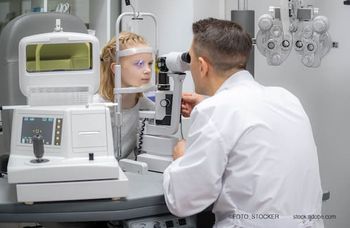
Femto-CKT procedure shows promise for keratoconus stabilization
Keratoconus in eyes with stage I or II disease has remained stable during follow-up to 2 years after circular keratotomy performed using a femtosecond laser.
Take-home message: Keratoconus in eyes with stage I or II disease has remained stable during follow-up to 2 years after circular keratotomy performed using a femtosecond laser.
Reviewed by Detlev R.H. Breyer, MD
Düsseldorf, Germany-Circular keratotomy performed with a femtosecond laser (“femto-CKT”) is a safe, effective, and efficient method for stopping keratoconus progression in eyes with earlier-stage disease, suggest results from follow-up to 1.5 years.
In addition, the treatment benefit occurs regardless of patient age, said Detlev R.H. Breyer, MD, owner and leading anterior segment surgeon, Breyer-Kaymak-Klabe Augenchirurgie, Düsseldorf, Germany.
More about femto-CKT
The procedure is a modern refinement of circular keratotomy. Rather than making a penetrating dissection with a trephine knife, femto-CKT uses a proprietary femtosecond laser (Femto LDV Z6, Ziemer) to create an intrastromal cut without intended perforation of Bowman Descemet membrane. The procedure aims to stabilize the corneal surface using the keratotomy to isolate the central cornea and anticipating that the scar will act as a stabilizing ring.
Related:
Dr. Breyer, along with Jörg Krumeich, MD, Bochum, Germany, and Thomas Neuhann, MD, Munich, Germany, came up with the specific parameters for a femto-CKT. They aimed to achieve the efficacy of the original procedure combined with the potential advantages of making an intrastromal cut with the femtosecond laser without the need for a double-running suture.
“We were unsure at first whether the femtosecond laser cut would create an intrastromal scar that could stabilize the cornea,” Dr. Breyer said. “We reasoned, however, that the procedure could be completed faster using the femtosecond laser and we expected that keeping the cut within the stroma would minimize risk of infection, result in less postoperative pain, and might avoid the need for a double-running suture.”
Related:
“With anterior segment OCT, we have demonstrated that femto-CKT results in an intrastromal scar, and the clinical outcomes are promising,” he added.
However, outcomes in more eyes and with a close longer follow-up is definitely needed to determine the safety and efficacy of the procedure and the longevity of keratoconus stabilization, he noted.
Clinical analysis
Dr. Breyer and colleagues analyzed outcomes from a series of 45 eyes with stage I or II keratoconus that underwent the femto-CKT procedure at the private clinic of Dr. Krumeich. The cut was created starting at 100 μm from the corneal epithelium to 60 μm above Descemet’s membrane.
Data from follow-up at 1, 3, 6, 12, and 24 months was available for 39, 24, 19, 11, and 4 eyes, respectively.
Analyses of refractive (Figure 1), keratometric (Figure 2), and pachymetric (Figure 3) data showed no evidence of keratoconus progression.
Distance corrected visual acuity was slightly improved from baseline, indicating good safety, and when eyes were stratified by patient age, outcomes were similar comparing subgroups of patients ages <35 years and ≥35 years (Figure 4).
Related:
Dr. Breyer noted that the femtosecond laser being used for femto-CKT was specifically chosen because of its unique features. Relative to other platforms that are available, it has very low pulse energies (nanosecond range) and induces only small cavitation bubbles.
When used to make the intrastromal keratotomy, the laser is operated using a very high pulse frequency (>5 mHz) to create overlapping spots (diameter <2 μm).
“Tight spacing mimics the mechanical cut made with a trephine because it leaves almost no undissected spaces,” Dr. Breyer said.
The only adverse event encountered so far was a single case of gas breakthrough causing opening of the inner layers of the cornea.
Recent:
“As a first time observation, this event was a little frightening to us because we did not know what would happen and were unsure about whether to intervene and how to do so,” Dr. Breyer said. “We chose to follow the patient with careful observation and were relieved to see the opening had closed by the first day after the procedure.”
Detlev R.H. Breyer, MD
This article was adapted from Dr. Breyer’s presentation at the 2015 meeting of the European Society of Cataract and Refractive Surgeons. He has no relevant financial interests to disclose.
Newsletter
Don’t miss out—get Ophthalmology Times updates on the latest clinical advancements and expert interviews, straight to your inbox.


















































.png)


